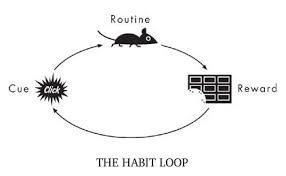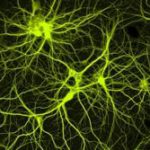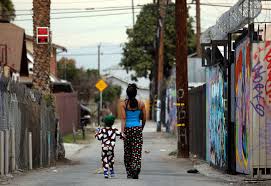The paper I recently published in the New England Journal of Medicine (linked here, summary linked here) detailed my best arguments against the disease model of addiction. But it also explored new territory, and that’s the topic of today’s post.
I emphasized (as I have for years) that addiction is learned. It is not a pathology but a learned package of desires, actions and expectancies that keep leading back to the same reward. We call it a reward, but most of us who’ve been through it know that the experience itself gets less rewarding  even as the desires and expectancies continue to strengthen. Is that pathological? No more than being in love with a hurtful partner, or praying to an unresponsive god, or being devoted to a sports team despite their string of losses. When the power of a reward arises from strong emotions and needs, the tendency to pursue it isn’t rational. When we seek and find that thing again and again, then, through learning,
even as the desires and expectancies continue to strengthen. Is that pathological? No more than being in love with a hurtful partner, or praying to an unresponsive god, or being devoted to a sports team despite their string of losses. When the power of a reward arises from strong emotions and needs, the tendency to pursue it isn’t rational. When we seek and find that thing again and again, then, through learning,  the synapses of our brain form into dense networks (pathways of connected neurons) that become very difficult to circumvent. Learning on overdrive, through repetitive need-satisfaction, is habit formation — addiction is a deep and insidious habit.
the synapses of our brain form into dense networks (pathways of connected neurons) that become very difficult to circumvent. Learning on overdrive, through repetitive need-satisfaction, is habit formation — addiction is a deep and insidious habit.
Well, you’ve heard me go on about this before, and my second addiction book, The Biology of Desire, makes the point pretty well. But my recent article came out in a journal read by more doctors than any other journal in the world. To convince that audience, I tried (with the help of Shaun Shelly, who co-wrote or edited much of it) to show that each of the brain changes highlighted by the disease model are not pathological. They’re the sorts of brain changes you’d expect when  expectancies and emotions become attached to a specific goal, leading to behaviours that are partly automatic — and partly not. Habit formation results in automaticity, sensitization to some rewards, and desensitization to others. The brain changes seen in addiction are just the biological underpinnings of this natural learning progression. And…they can continue to update; they’re not carved in stone.
expectancies and emotions become attached to a specific goal, leading to behaviours that are partly automatic — and partly not. Habit formation results in automaticity, sensitization to some rewards, and desensitization to others. The brain changes seen in addiction are just the biological underpinnings of this natural learning progression. And…they can continue to update; they’re not carved in stone.
The new territory I wanted to explore sits outside the brain, in the world, in the environment of the addict (I use that term without disdain or judgement, having been one myself). Our environment, especially our social environment, consists of the people we care about, many of whom care about us, and of opportunities for care, for sharing, for pleasure, for relief, for a sense of fulfillment. These opportunities require certain resources, such as social skills, knowledge, self-esteem (at least a little), financial stability, the capacity to understand others. Opportunities are bridges between our needs and their satisfaction. Resources are the capital we use to pursue them.
When people fall into addiction, their environments shrink around them. Good friends, stable romantic partners, available, loving family members, physical comforts such as a safe place to live, job opportunities, and all the rest of it, gradually become less available. The opportunities for getting them back also become less available. Our attention and motivation, riveted now to just one source of satisfaction, lose their connection with the other sources of satisfaction that “normal” people enjoy. I see this as a literal narrowing or shrinking of the environment. Because of what I’ve called “now appeal” — or simply habit strength or deeply learned habitual behaviour patterns — we focus only on what’s in front of us and forget how to go after other rewards. So other rewards fade in availability. They evaporate. They get lost.
When I was an addict, I lost close friends, I lost a woman I loved, I lost the opportunity to communicate honestly with my parents, I lost money, I lost a sense of social and physical safety, I got kicked out of school and lost that opportunity (for a while) and all the rest of it. This picture is typical, one way or another.
 But what blows me away conceptually is how this narrowing of the available, reachable, usable social environment precisely parallels the narrowing going on in one’s brain. My synapses fell in line, in pathways and networks that had a single purpose, so to speak, rather than multiple pathways supporting
But what blows me away conceptually is how this narrowing of the available, reachable, usable social environment precisely parallels the narrowing going on in one’s brain. My synapses fell in line, in pathways and networks that had a single purpose, so to speak, rather than multiple pathways supporting  multiple purposes. This “narrowing” in the brain corresponded with a shrinking or narrowing in my available environment. Neither is pathological. Both, especially both together, create a kind of prison.
multiple purposes. This “narrowing” in the brain corresponded with a shrinking or narrowing in my available environment. Neither is pathological. Both, especially both together, create a kind of prison.
Perhaps of interest to those into philosophy or psychology, this tendency has been studied as a universal feature of living organisms. The sensory and behavioural specialties of a species get synchronized with aspects of that species’ environment. Both change together. This can happen over evolutionary time. But it can also happen at the scale of human development, as I’m talking about here. The study of this process is called “embodied cognition.” Google it.
 One more point made in the article that Shaun and I thought was crucially important: people who study addiction know that there are massive correlations between early adversity (e.g., neglect, abuse, poverty, racial segregation, parental depression, parental alcoholism — in childhood or adolescence) and the probability of becoming addicted later in life. When thinking about how the narrowing environment corresponds with the narrowing of brain function, we can see that the addict’s environment starts off narrow! Kids with happy, healthy social-emotional worlds, who have not experienced trauma, rarely become addicts.
One more point made in the article that Shaun and I thought was crucially important: people who study addiction know that there are massive correlations between early adversity (e.g., neglect, abuse, poverty, racial segregation, parental depression, parental alcoholism — in childhood or adolescence) and the probability of becoming addicted later in life. When thinking about how the narrowing environment corresponds with the narrowing of brain function, we can see that the addict’s environment starts off narrow! Kids with happy, healthy social-emotional worlds, who have not experienced trauma, rarely become addicts.
It’s really so simple. The narrowing begins early, sometimes even before birth — look to the family of origin. (Gabor Maté has emphasized the impact of adversity in early childhood. Bruce Alexander targets sociocultural adversity.) This helps us understand how environments and brains influence each other all the way along. If your childhood is hampered by obstacles and dead-ends, whether emotional, social, financial, or some combination of these, the narrowing has already begun.

Leave a Reply to Alison Cancel reply